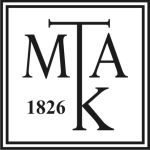Az angolszász házassági jog a törzsi szokásjogok alapján
DOI:
https://doi.org/10.15170/Dike.2023.07.01.13Kulcsszavak:
marriage law, law codes, tribal customs, women’s rights, Munt, mundium, Christian elements, widows, equalityAbsztrakt
According to Sir Maitland and Sir Pollock, the „Anglo-Saxon law is not only archaic, but offers an especially pure type of Germanic archaism”. This means that the Old-English law is free from any Roman or Christian element, thus it is inherenlty different among other Germanic customary laws. The law codes (in Old-English they are called domas) are written in their own language, unlike other Germanic tribes who wrote in Latin. Altough the Roman and Christian elements will appear in the Isle when Aethelberht changes religion, the impacts are minimal. In other words: those who want to come to know the closest one of the Germanic customary laws to the original, they should pay attention to the „lost child” of the Leges Barbarorum: the Leges Anglo-Saxonum. In my essay the questions are simple: what characterizes the legal status of a married woman and a widow? Is she an object or a person? What happens with her and her property after the death of her husband? There are answers, but they are comlicated. The provisions are obscure and are difficult to understand because their language is archaic, and the researchers are subjective to the point where we no longer knows the truth. This way there is no end of the presumptions and guesses, the literature is often contravene with itself, thus it is necessary to take a commitment in some questions. Still I think there is some kind of an objective reality I found: a woman is not less than a living person but sadly she cannot be totally equivalent with men (and her husband).
Downloads
Megjelent
Hogyan kell idézni
Folyóirat szám
Rovat
License
Open Access politika: A folyóirat nyílt és korlátlan hozzáférést biztosít a tartalmához. Bárki jogosult a közzétett tartalmak letöltésére, felhasználására, nyomtatására, terjesztésére és/vagy másolására a nemzetközileg elfogadott tudományetikai normáknak megfelelően.
A folyóirat (Kiadó) szabadon elérhetővé és letölthetővé teszi a cikkeket saját hivatalos, kiadói honlapján, időbeli korlátozás nélkül. A cikk első közzétételének joga kizárólagosan a Kiadót illeti. A Szerző elfogadja, hogy a Kiadó a cikket oly módon teszi közzé, hogy a cikk felhasználási jogaira bármely harmadik fél számára az első közzétételt követően a Creative Commons Attribution-NonCommercial-SharAlike 4.0 (CC-BY-NC-SA 4.0) licenc feltételek az irányadók. A Kiadó e licensz keretében átalakíthatja a cikket tetszőleges elektronikus formátumba, a cikket számítógéppel vagy elektronikus adathordozóra másolhatja. A Kiadó a cikk közlési és felhasználási jogát megoszthatja bármely harmadik féllel, illetőleg e jogokat bármely harmadik féllel közösen gyakorolhatja. A Kiadó a Szerző nevében felléphet a cikkel kapcsolatos jogsértések, jogtalan felhasználás és szellemi tulajdon sérelmét jelentő magatartások esetén. Gyakorolhatja mindazon jogokat, amelyeket a fent megjelölt „CC BY NC SA 4.0” licenc feltételek lehetővé tesznek harmadik felek számára.










